Berry Systems, the UK’s leading supplier of safety barriers, was formed in the 1970s. One of their earliest achievements was to develop and patent an innovative spring steel barrier system, which has long been the benchmark system in UK multi-storey car parks. Over the years Berry Systems’ range of safety barriers has grown to cover a wide array of industrial and commercial situations, with products designed to protect plant and people from accidents with fork lift trucks, pallet trucks, trolleys and other moving equipment, as well as cars, vans and HGVs. As standards have advanced, the solutions Berry Systems offer have matched or exceeded those requirements.

Today Berry Systems continue to provide safety barriers for a host of different business sectors. Among other projects they recently installed 2.5 km of barriers for the Co-op’s new regional distribution centre in Avonmouth.
Steve Dunn, Managing Director of Berry Systems, spoke to Warehouse & Logistics News.
Warehouse & Logistics News – Steve, what does your role as Managing Director of Berry Systems involve? Are you personally involved in developing products or implementing solutions for major clients?
Although I’ve been with the company for 10 years, I’ve only recently taken up the role of MD, from June to be precise. My background is engineering so I’m heavily involved in our NPD programme and, as much of our work is customised, that inevitably merges with solving clients’ specific problems.
WLN – Who else is in the senior management team besides you?
My Commercial Director is Martin Hall, the Sales & Estimating Manager Mark Robbins and our Contracts Manager Brian Lawrence.
WLN – Who owns Berry Systems?
Berry Systems was founded as a private company in the 1970s. Since 1999 it has been a member of the Hill and Smith Group.
WLN – How big is Berry Systems?
The Hill & Smith Infrastructure Products Group, of which Berry Systems is a part, has a turnover in excess of £50m and the figure for the Hill & Smith group as a whole is over £450m.
WLN – Where are you based?
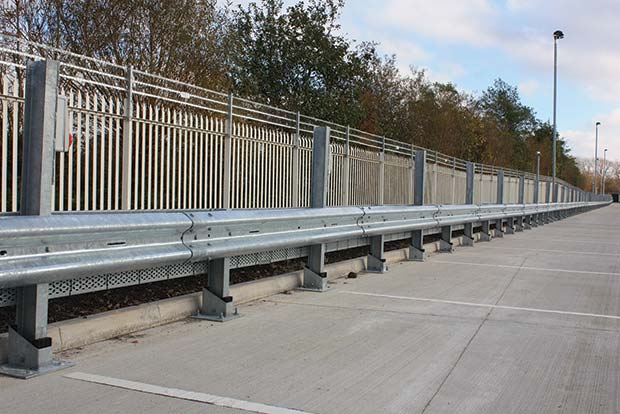
We’re located at Bilston, just outside Wolverhampton and very centrally placed for the whole of the UK.
WLN – Where do you develop and produce the safety barriers and other products that you sell here?
It happens mainly at the Bilston factory, although we have some specialist products in the range that were originally developed by our distributors for their home markets, for which we have seen opportunities in the UK.
WLN – Do you operate in any other countries besides the UK?
Yes, we have distributors in many countries throughout the world.
WLN – What proportion of your UK safety barriers business is for car parks and what proportion is for industrial applications? How fast is the industrial side growing?
It’s roughly 75/25 in favour of car parks, where we are the clear market leader and have been for many years. But the industrial side is the fastest growing. That’s partly because of new products we have developed specifically for that sector, like our double barrier to provide complete protection from a forklift truck, and partly because we already have a large share of the car park market.
WLN – What material are your barriers made of?
Most, but not all, of our products are made from steel, galvanised for longevity and the grade of steel carefully chosen for the optimum performance.
WLN – What different types of barrier products do you offer for specific situations such as loading bays, column protection, walkways and so on?
We have a wide range of products for loading bays, including our spring steel barriers which absorb impacts, handrail systems, wheel guides and kerb stoppers. We also have an extensive range of column protectors, again offering the advantages of spring steel and flexible bollards that will deflect and absorb an impact from a 20-ton truck without damage. Over the years we’ve provided vehicle safety barriers for almost any conceivable requirement on industrial premises. We can mount them on floors, walls or even directly onto structural columns.
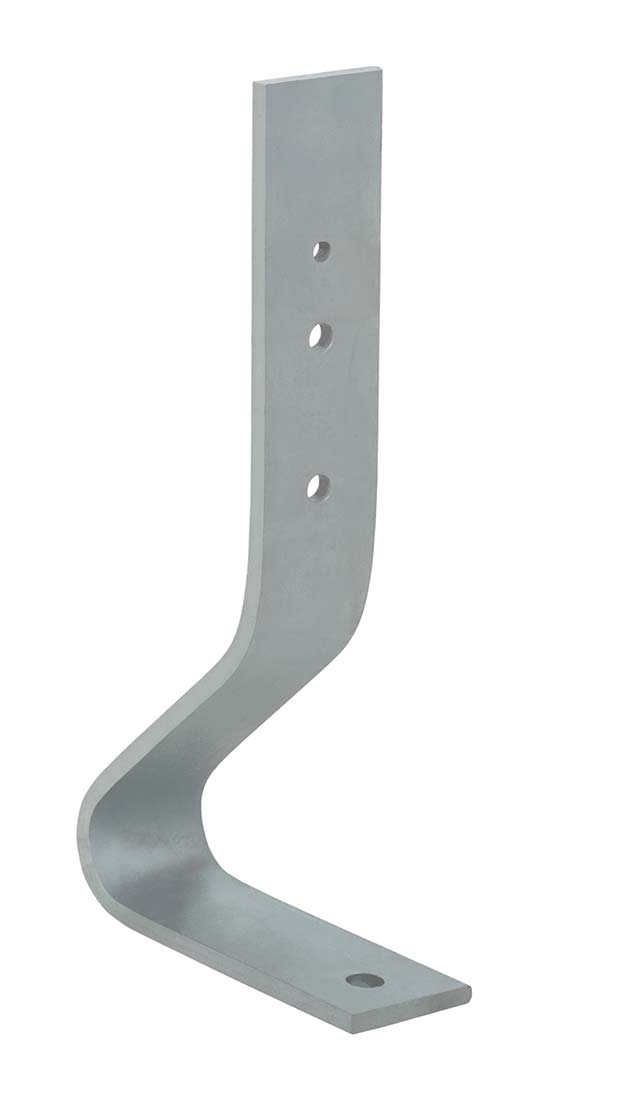 WLN – How do the steel barriers of the kind that you install in warehouses and industrial premises differ from the barriers we see on motorways and highways?
WLN – How do the steel barriers of the kind that you install in warehouses and industrial premises differ from the barriers we see on motorways and highways?
To the casual observer there’s little apparent difference, but that’s a very dangerous mistake to make. Motorway barriers are designed to fail in the sense that bolts shear and posts bend at surface level, thus allowing the vehicle to be retained at high speed by absorbing as much of the impact as possible. The vehicle barrier is then typically replaced with new posts and beams. Impacts are usually at high speed, and typically at an angle of about 20 degrees.
Barrier impacts in car parks and on industrial premises are usually at low speeds, and more often at right angles to the barrier. While the safety of people is still paramount, our barriers are designed to absorb the impact in a way that also minimises damage to the vehicle, the barrier and the anchorage.
WLN – In non-technical terms, can you talk us through the way a spring steel barrier absorbs impacts, compared to a rigid barrier? What are the advantages of a barrier being flexible?
Essentially there are three types of barrier systems in our range, rigid, semi-flexible and flexible. The rigid ones have their place, sometimes nothing else will do. They are heavily bolted to the floor or concreted in place, and almost all the force of an impact is transmitted down through the anchorage. The barrier will need to be replaced after any significant accident and unfortunately the anchorage will probably be damaged too. Sometimes, because they look like motorway barriers people assume they will do the job and wrongly specify them.
The mainstay of our range is our spring steel barrier systems. The grade of steel is called spring steel because it will deflect, compressing like a spring, and then return to its original state and position. This considerably reduces the damage to the vehicle, barrier and anchorage. To get technical for a moment to illustrate the point, if a 1500kg vehicle hits a rigid barrier at 10 mph, the effective horizontal force, defined by the British Standard, is 151.8kN. A spring steel system, under the same impact, will deflect by 300mm, reducing the horizontal force to only 38kN. The advantages are obvious. They need much less repair or maintenance and are quicker to install, as you only need to secure them with one or two bolts.
The third range is our semi-flexible systems, which have some of the advantages of the flexible ones but limit the impact absorbing deflection to 120mm where there just isn’t enough room for more.
WLN – What different types of barrier systems do you offer for different levels of impact?
Some performance variation can be offered by the choice of barrier profile. The traditional Armco style and our slimmer, neater, Berry Beam profile offer similar performance levels, but an Open Box Beam barrier is a heavier duty and is often used where HGVs are present. But a considerable degree of performance control can be achieved by varying the frequency of the posts.
WLN – Do you have videos on your web site to show your industrial products in action?
Yes, there are a number of videos on the site showing the products in use and under test.
WLN – Can people order standard barriers on line from your website? How quickly can you supply and install your standard safety products?
Yes, there are links from our main site to our e-commerce catalogue. Most items can be supplied in 2-3 days.
WLN – What’s the minimum size order for a tailor-made safety barrier? What’s been your biggest ever contract in terms of the quantity of the barriers and the distance they would stretch end to end?
There’s no minimum order as such. Often a small adaptation to an existing system will provide a simple solution, or it could be something completely new. Many of our installations can be measured in kilometres rather than metres. The longest I can remember was the three car parks at the Westgate Shopping Centre next to the 2012 Olympic Park. We installed over 10 km of barriers on that site.
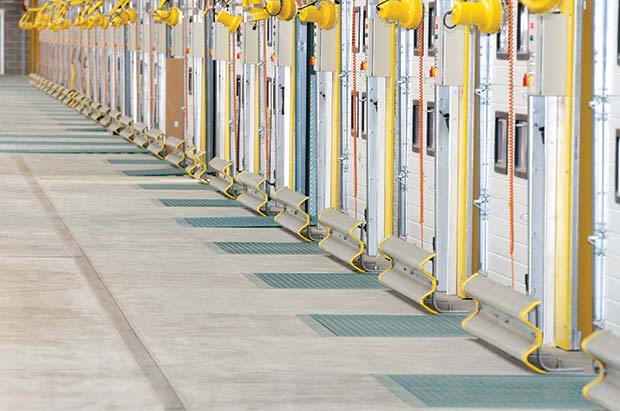
WLN – How sustainable are your products? If they are hit, do they need to be replaced, or can they be repaired? How long do they last for, without corroding or otherwise failing?
Steel is very sustainable and completely recyclable and so has a lower carbon footprint than it’s sometimes given credit for. Generally our barriers are galvanised to prevent corrosion but can be powder coated. Spring Steel barriers can sustain significant impacts without damage and can give many years of service.
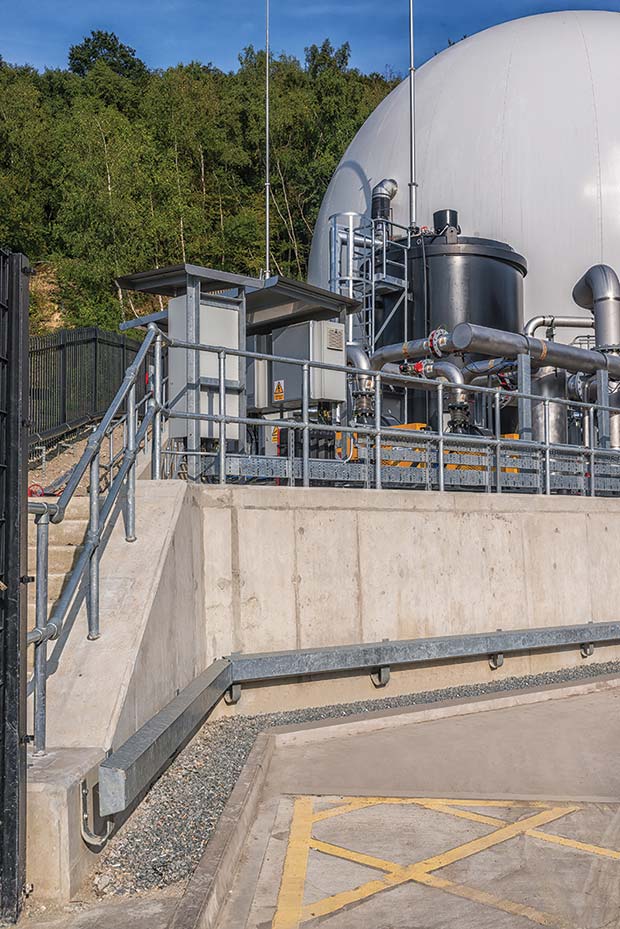 WLN – What are your latest products to be introduced?
WLN – What are your latest products to be introduced?
Our latest products to be launched are a barrier system mounted to a building’s structural columns rather than the floor, and a flexible ‘Soft Stop’ bollard that flexes on impact by deflecting up to 20 degrees and then returning to vertical.
WLN – Under the existing standards and codes of practice, what barriers and other safety measures must warehouse operators have in place in their warehouses, yards, loading bays and so on? Do safety barriers need to be checked regularly?
The key standards are Part K of Building Regulations, BS6180 and the new European Standard BS EN 1991 -1-1 2002 Annex B, which replaces the old BS6399. All safety barriers should be checked regularly to ensure they maintain their specified performance.
WLN – As a leading company in this field, are you involved in developing new BSI and other standards for safety barriers?
The car park market is the driving force, if you’ll pardon the pun, behind safety barrier standards and we sit on the British Parking Association technical committee, as well as having close links with many of the consultant engineers who are actively involved in the development of the standards.
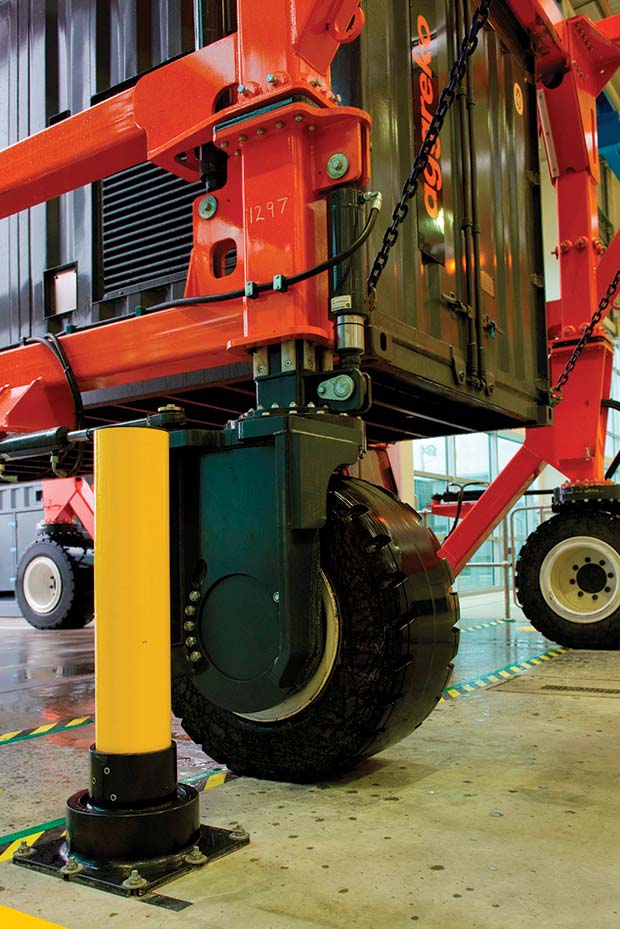 WLN – Can you talk us through some of the major industrial and retail contracts you have carried out recently, and tell us about the challenges they presented?
WLN – Can you talk us through some of the major industrial and retail contracts you have carried out recently, and tell us about the challenges they presented?
We’ve recently installed safety barriers at the new Biffa Mechanical Biological Treatment facility near Horsham. This required protection against heavily laden HGVs delivering waste material for recycling. One of the challenges was the lack of distance between the access road and the plant, so we mounted many of the spring steel barriers onto the walls rather than the floor to save space but still allow room for deflection on impact.
On the retail side, at the new Co-op RDC in Avonmouth we developed an addition to our double barrier for use in their dairy area. This was an extra channel at floor level to stop any spilled milk from escaping under the barrier and to keep it contained.
WLN – Do you carry out your own installations? Do you act as main contractor for the related works on site?
Yes, we have our own installers supplemented by approved contractors when needed. We also sell on a supply only basis if preferred.
WLN – Have you seen an upsurge in orders since the recession?
We quoted on a lot of projects throughout the recession but many were then delayed through lack of finance. That’s easing now, as well as an increase in completely new projects.
WLN – Where do you see industrial safety barriers and Berry Systems going from here?
I think it’s an exciting time for new product development involving new styles, new materials and new systems. Barriers will increasingly look better without compromising performance, and we can help make industrial environments ever safer.

WLN – And finally: I see there are some great parking and motoring-related videos and jokes in the ‘And finally’ section on your website. Do you plan to add any more?
We’ve always felt that work should be enjoyable. Obviously we don’t make fun of any incident where people have been hurt, but if anyone has a good joke or piece of video about parking or perhaps driving FLTs then we’ll happily give it an airing.
Berry Systems
Tel: 01902 491100




Comments are closed.